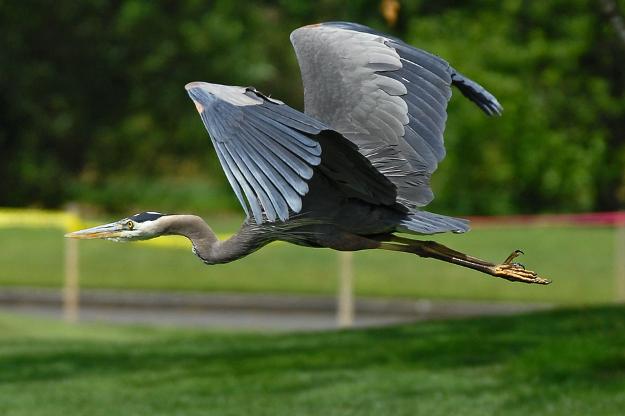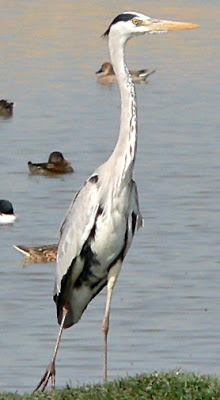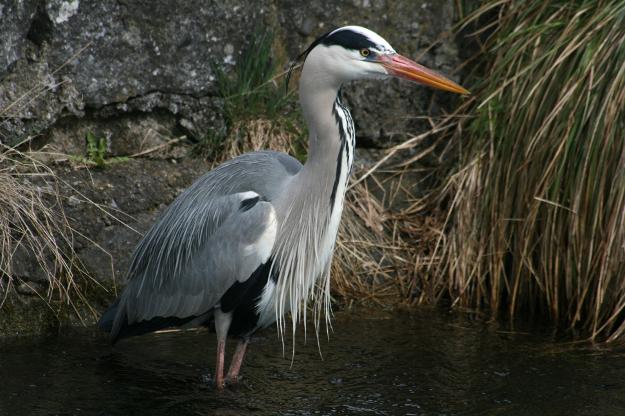

THE HERON.
IN the picture we have a very good representation of a common English bird,—the heron. The American species of this bird has snowy white plumage, and the feathers of the train are so long that they hang over the tail, entirely concealing it. These long feathers are very much sought after, in order to make them into brushes for dusting delicate pieces of furniture. The brushes bring a high price, because the bird is so wary that he is difficult to catch. The young of this bird are hatched about the end of June, and they go in flocks of twenty or thirty in number.
The heron was once one of the commonest of all
English birds; but as the swampy lands have gradually been drained and converted into fertile ground fit for cultivation, the heron has disappeared, and is now rarely seen except in marshy places.
It lives principally on fish, and reptiles, mice and water-rats. It is also fond of eels, but it cannot swallow one of these wrigglers as easily as it can a fish, being first obliged to take it a shore, and batter it against the ground until it is disabled. It has been known to eat young water-hens. The heron has power to disgorge its food; and it frequently does this when, after a day's fishing, it is chased by other birds.
When searching for something to eat, it stands motionless as stone, near the water's edge, with its head drawn in and resting between its shoulders.
It likes best to stand under overhanging boughs, where, on account of its slate-colored plumage, it is not very often seen by anyone who is not familiar with its habits.
In flying, the heron extend sits long neck and legs in a line, moving through the air in a grand and stately manner, its large wings enabling it to fly gracefully and rapidly.
The Nankeen night heron is a native of Australia, and is found all over that continent. It is not so graceful a bird as the English species. As its name implies, it is a night bird, and is therefore seldom seen. At the dawning of the morning, it flies away to the forests, perching up among the branches of the tall trees, where it remains all day, sheltered from the scorching rays of the sun, and seldom moving unless shot at. It sails through the air in a slow, flapping manner. It builds its nest in the branches of trees, or on the points of shelving rocks. The nest is large and flat, made of crooked sticks woven loosely together.
It lays three eggs of a light-green color, about two and one-half inches long, and one and one-half broad.
The full-grown birds are a beautiful cinnamon brown on the back, and white underneath. The young birds look so different from the old ones that they might easily be taken for another species.
The heron is usually a bird of solitary habits, only in the spring-time gathering together in any numbers. M'Lellan described very accurately the habits of the heron, when he wrote:—
"Far up some brook's still course, whose current streams
The forests' blackened roots,
and whose green MargeI’s seldom visited by human foot,
The lonely heron sits, and harshly breaks
The Sabbath-silence of the wilderness;
And you may find her by some reedy pool,
Or brooding gloomily on the time-stained rock,
Beside some misty and far-reaching lake."
W. E. L.

